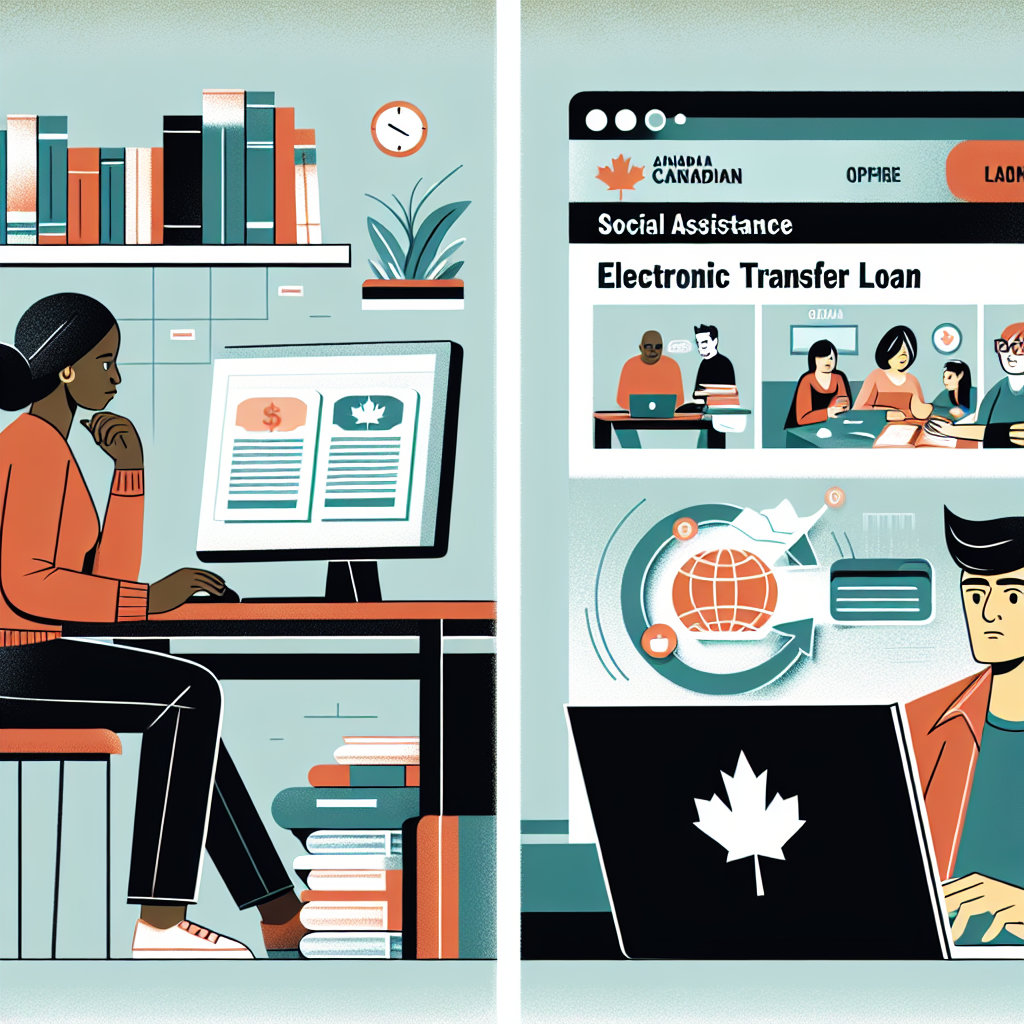Navigating the complex landscape of financial support can feel overwhelming, especially for recipients of social assistance in Canada. The introduction of e-transfer loans has emerged as a potential lifeline for those in financial distress. Yet, understanding how to leverage this resource can be challenging. With many navigating through bureaucratic red tape, it’s crucial to uncover effective strategies that can provide immediate relief while ensuring long-term stability. In this article, we will explore the dynamics of e-transfer loans and reveal insights into the challenges faced by social assistance recipients, along with innovative ways to overcome them.
Understanding E-Transfer Loans: A Lifeline for Recipients
E-transfer loans have surfaced as a revolutionary option for individuals receiving social assistance in Canada. These loans offer quick access to cash through electronic transfers, allowing recipients to address urgent financial needs without the cumbersome processes often associated with traditional lending. The speed of approval and funds transfer can be a game-changer for those facing unexpected expenses or emergencies, providing immediate relief from financial strain. By integrating technology into financial solutions, e-transfer loans have managed to simplify and expedite the borrowing experience, making them an attractive option for those living on the edge of financial insecurity.
However, while e-transfer loans present a promising avenue for immediate financial support, they are not without their complexities. Recipients must navigate a network of terms, conditions, and potential pitfalls. Understanding interest rates, repayment schedules, and eligibility requirements is essential for ensuring that the benefits of these loans outweigh the costs. Many recipients may find themselves overwhelmed by the fine print, leading to confusion and, in some cases, mismanagement of funds. Ensuring transparency in these transactions is vital, as a lack of clarity can result in unforeseen financial burdens for borrowers.
Equipped with the right knowledge, e-transfer loans can ultimately empower social assistance recipients to take control of their financial situations. Those who familiarize themselves with the system can unlock various advantages, such as avoiding predatory lending practices or learning about government programs designed to assist low-income individuals. By understanding their rights and responsibilities regarding e-transfer loans, recipients can better position themselves to utilize this financial resource effectively, paving the way for greater economic stability.
Challenges and Solutions in Canada’s Social Assistance System
The Canadian social assistance system is often riddled with challenges that can impede financial stability for its recipients. One of the most significant hurdles is the stigma associated with relying on government aid, which can discourage individuals from seeking help. Many social assistance recipients experience emotional and psychological burdens stemming from societal perceptions, leading to feelings of shame or inadequacy. This stigma can prevent them from accessing essential services, including financial support options like e-transfer loans, which could alleviate their immediate hardships.
Moreover, the bureaucratic nature of social assistance programs can further complicate the situation. Lengthy application processes and rigid eligibility criteria often leave recipients feeling frustrated and powerless. These barriers not only delay access to necessary funds but can also deter individuals from pursuing financial solutions altogether. The pressure to navigate complex systems can be overwhelming, especially for those already grappling with financial instability, leading to a cycle of despair and hopelessness.
Innovative approaches and inclusive strategies are essential to addressing these challenges within Canada’s social assistance system. Community organizations and advocacy groups play a pivotal role in raising awareness about available resources, including e-transfer loans. By providing education and support, they can help recipients better understand their options and empower them to make informed decisions. Additionally, implementing streamlined processes and more flexible eligibility criteria can significantly improve access to financial aid, allowing social assistance recipients to focus on rebuilding their lives rather than battling red tape.
As Canada’s landscape shifts, e-transfer loans represent a beacon of hope for social assistance recipients seeking immediate financial relief. By understanding how to navigate this digital financial tool while recognizing the challenges inherent in the social assistance system, individuals can take charge of their financial futures. The journey may be fraught with obstacles, but by leveraging available resources and seeking support from community organizations, recipients can pave the way toward a more stable and self-sufficient life. If you or someone you know is facing financial difficulties, consider exploring e-transfer loans and other supportive services available in your community to empower your path to financial security.
Navigating Payday Loans in Canada: A Bad Credit DilemmaExploring Alberta’s Online Payday Loan Landscape: Risks and RealitiesNavigating the Payday Loan Landscape in Victoria, BCRelevant LinkRelevant LinkRelevant Link



